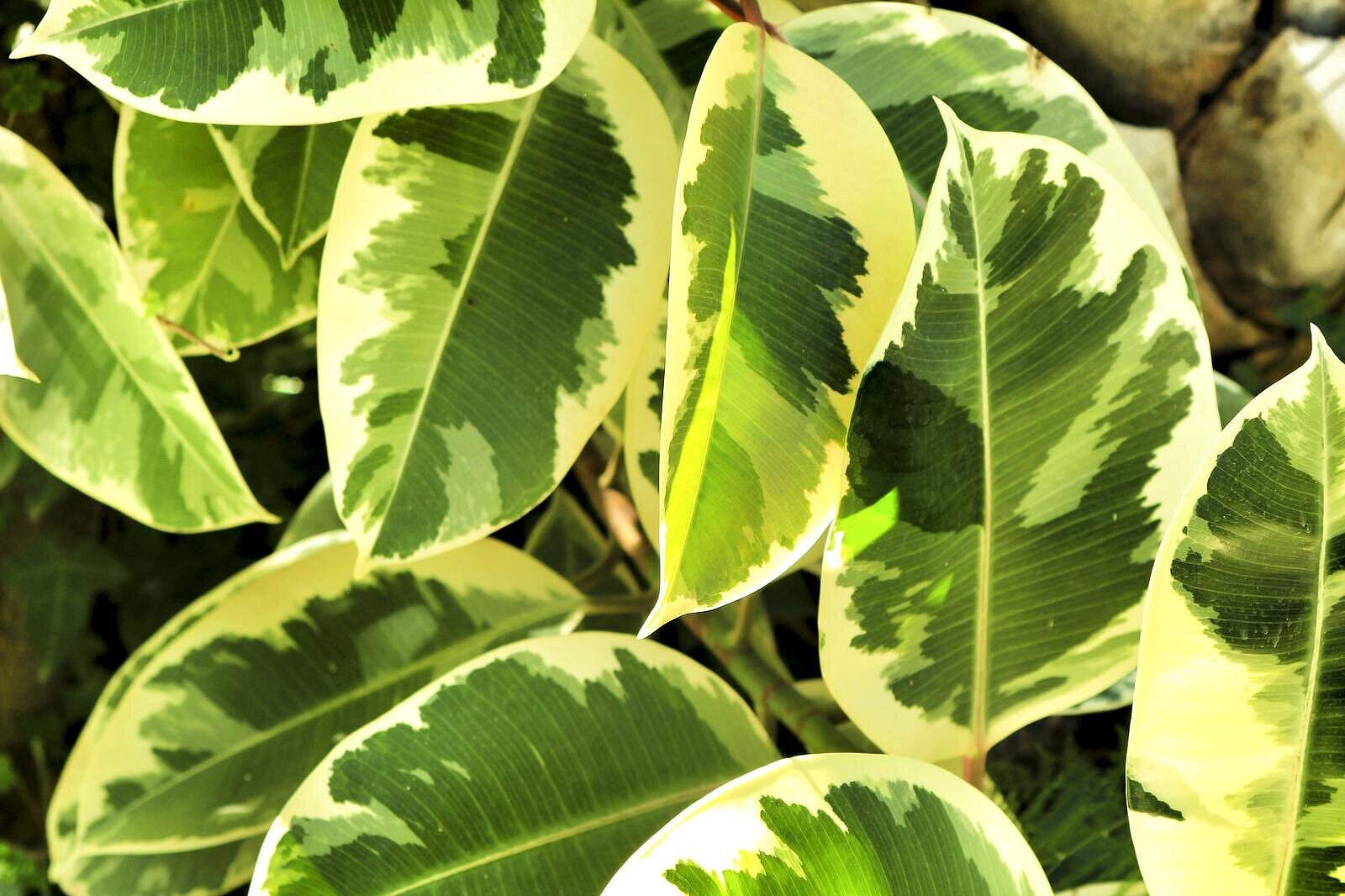Ficus

What is Ficus?
Ficus is a genus of plants native to the tropics and subtropics of the world. They usually have leathery leaves and a milky sap that oozes out when injured. Some Ficus species produce edible fruits called figs. Other Ficus species grow as epiphytes on other plants or form aerial roots. Ficus are often very adaptable and can grow under different light and temperature conditions.
What are the benefits of ficus for dogs?
With proper care, ficus can have several benefits for dogs. Firstly, ficus can improve the indoor climate by producing oxygen and filtering pollutants from the air. This can have a positive effect on the health and well-being of dogs. Secondly, ficus can have a decorative function and make the home cozier. This can have a positive effect on the mood of dogs who like to be in a beautiful environment.
What are the disadvantages of ficus for dogs?
Ficus can also have disadvantages for dogs if it is not cared for properly. For one thing, ficus plants can be poisonous if eaten by dogs. The milky sap of the ficus contains latex and other substances that can cause irritation in dogs' mouths, gastrointestinal problems or allergic reactions. Ficus plants can also trigger allergies if they are touched or inhaled by dogs. The milky sap of Ficus can cause skin rashes or itching or irritate the respiratory tract.
How to make Ficus safe for dogs?
If you want to keep a Ficus in your home, you should take some precautions to make it safe for dogs. Here are some tips:
- Choose ficus species that are less toxic than others. For example, the birch fig (Ficus carica) and the birch fig (Ficus benjamina) are less toxic than the rubber tree (Ficus elastica) or the climbing fig (Ficus pumila).
- Place Ficus in places that your dogs cannot reach. For example, hang Ficus on high shelves or on the wall or place them behind a gate or door.
- Prevent your dogs from nibbling or scratching the ficus. You can distract your dogs with toys or chew toys, for example, or teach them that Ficus is taboo
- Clean the leaves of the ficus regularly and remove fallen leaves or fruit from the ground. This will prevent your dogs from coming into contact with the milky sap or accidentally eating it.
- Watch your dogs for signs of poisoning or allergies if they have come into contact with the ficus. For example, look out for symptoms such as salivation, vomiting, diarrhea, sneezing, coughing or reddening of the skin.
Ficus is a plant genus with leathery leaves and a milky sap. Some species produce edible fruit. Ficus plants can improve the indoor climate and be decorative. However, they are toxic to dogs and can cause irritation, gastrointestinal discomfort and allergic reactions. To make Ficus safer for dogs, choose less toxic species, place them out of reach, discourage dogs from nibbling and keep the plant clean. If there are signs of poisoning or allergy, act immediately.
If you notice any signs of hypersensitivity or poisoning in your dog, you should see your vet immediately. We are not a substitute for a vet, but we try to be as accurate as possible. Every dog reacts differently and we recommend you get a second opinion or consult your vet if in doubt.
Stay healthy and take good care of your four-legged friend!😊
Similar to Ficus
Rubber tree is the colloquial name for a group of plants from the spurge family. The best-known representative is Ficus elastica, which originates from Southeast Asia and can grow up to 30 meters...
The common fig (Ficus carica) is a fruit that grows on the tree of the same name, which belongs to the mulberry family (Moraceae). Originally from the Middle East, the fig has spread around the...
The birch fig, or Ficus benjamina, is a plant from the Moraceae family, originally from Asia and Australia. It is characterized by its glossy, green leaves and ability to thrive indoors. Due to its...
The violin fig (Ficus lyrata) belongs to the mulberry family (Moraceae) and is a plant native to the tropical rainforests of West Africa. It is characterized by large, leathery leaves that resemble...



